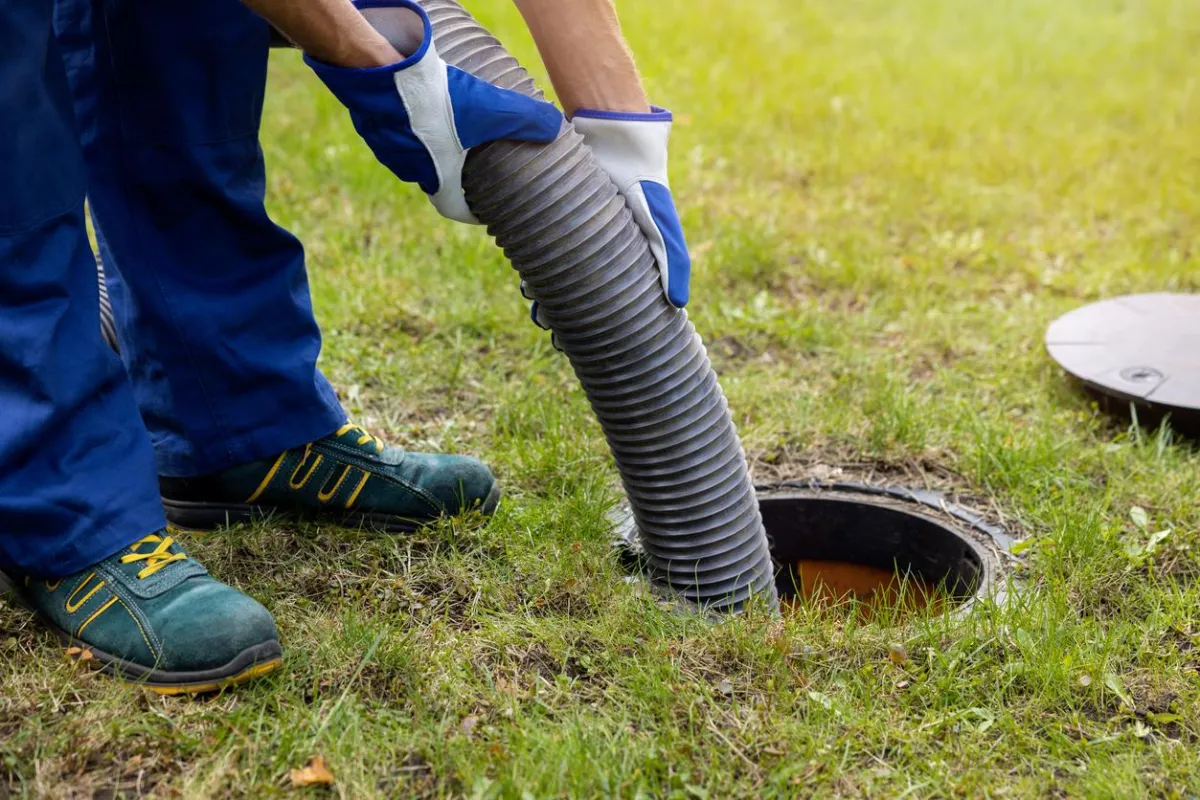How Long Should a Septic System Last? A Complete Homeowner's Guide

Are you wondering about the lifespan of your home's septic system? You're not alone! Understanding how long should a septic system last is crucial for every homeowner with this important installation.
According to the Environmental Protection Agency, a well-maintained septic system can serve your home for decades, but several factors affect its longevity. Making smart decisions about your system's care can mean the difference between a 20-year and a 40-year lifespan.
Let's explore everything you need to know about maximizing your septic system's durability.
Understanding Your Septic System Components and Lifespans
When homeowners ask us how many years do septic systems last, we typically tell them it varies by component:
Tank Materials
Concrete tanks: 40+ years with proper maintenance
Plastic tanks: 30-40 years with regular care
Steel tanks: 15-20 years (more prone to corrosion)
Fiberglass tanks: 40+ years with proper care
Other Components
Drainfields: 20-30 years under optimal conditions
Distribution boxes: 20+ years
Baffles and filters: 10-15 years
Pumps: 5-10 years
Control panels: 15-20 years
Pipes: 25-30 years
Factors Affecting Septic System Longevity
1. Installation Quality
Proper soil evaluation and testing
Correct system size for household needs
Professional installation by certified contractors
Appropriate materials for local conditions
Proper permit compliance and inspections
Adequate depth and slope
Correct distance from water sources
Proper venting system installation
Quality of materials used
Installation documentation
2. Usage Patterns
How long do septic systems usually last depends heavily on use:
Number of residents in the home
Daily water consumption habits
Waste volume and type
Chemical usage in the home
Seasonal occupancy patterns
Garbage disposal use
Laundry habits
Guest frequency
Hot tub or water softener discharge
Home business impact
3. Maintenance Practices
Regular care affects how long does the average septic system last:
Pumping frequency and timing
Inspection schedule adherence
Prompt repair response
Chemical treatment choices
Water conservation efforts
Record keeping
Professional service quality
Monitoring and testing
Filter cleaning schedule
Surface water management
Comprehensive Warning Signs
Early Warning Signs
Slow drains throughout house
Gurgling pipes and toilets
Bad odors inside or outside
Minor backups
Occasional odors
Slow toilet flushing
Serious Warning Signs
Wet spots in yard near tank
Sewage backups in fixtures
Unusually green grass over system
Standing water over drainfield
System alarms activation
Frequent clogging
Soil settling around tank
Consistent bad odors
Multiple drain problems
Sewage surfacing
Essential Maintenance Tasks
Daily Practices
Conserve water usage
Avoid harmful chemicals
Space out water usage
Monitor drainage patterns
Watch for warning signs
Use septic-safe products
Minimize garbage disposal use
Practice water conservation
Monitor unusual sounds
Keep records of issues
Monthly Tasks
Check for leaks in fixtures
Inspect drain areas
Monitor water usage
Record system performance
Check for odors
Observe grass conditions
Review household products
Clean effluent filters
Check alarm systems
Update maintenance log
Annual Requirements
Professional inspection scheduling
Tank level measurement
Drainfield evaluation
Component assessment
Baffle inspection
Filter cleaning
Documentation update
Pump assessment
Control panel testing
System pressure check
Seasonal Maintenance Guidelines
Spring Tasks
Check for winter damage
Inspect for flooding issues
Clean filters
Check venting system
Evaluate drainfield
Summer Care
Monitor grass growth
Check for odors
Watch water usage
Maintain landscaping
Check for compaction
Fall Preparation
Clear leaves from area
Final filter cleaning
System inspection
Documentation review
Winterization planning
Winter Protection
Maintain consistent usage
Prevent freezing
Monitor snow cover
Check venting
Record any issues
Professional Maintenance Schedule
Regular Inspections
Complete inspection: Every 3 years minimum
Tank pumping: Every 3-5 years based on usage
Component check: Annual professional review
Water quality test: Bi-annual sampling
Specialized Services
Soil evaluation: Every 5 years
Filter cleaning: Annual service
Distribution box check: Every 3 years
Pump inspection: Annual
Electrical system check: Annual
Pressure test: Bi-annual
Comprehensive Cost Analysis
Regular Maintenance Costs
Professional inspection: $250-500
Tank pumping: $300-600
Minor repairs: $100-500
Annual service: $200-400
Water testing: $100-200
Filter replacement: $200-300
Riser installation: $300-500
Pump maintenance: $150-300
Control panel service: $100-200
Documentation: $50-100
Replacement Costs
New concrete tank: $3,000-7,000
New plastic tank: $2,500-5,000
Drainfield replacement: $5,000-20,000
Complete system: $10,000-30,000
Design and permits: $1,000-2,000
Site preparation: $1,500-4,000
Landscaping restoration: $500-2,000
Electrical updates: $500-1,500
Pump replacement: $800-1,400
Control system: $1,000-2,500
Final Thoughts
Understanding how long should a septic system last helps you plan for both maintenance and eventual replacement. With proper care, your system can serve your home efficiently for decades. Remember, the key to longevity lies in regular maintenance, proper usage, and prompt attention to problems. By following these guidelines and working with qualified professionals, you can maximize your septic system's lifespan and protect your investment.
A well-maintained system not only lasts longer but also protects your property value and the environment. Stay proactive with maintenance, be mindful of usage patterns, and always work with certified professionals for the best results. Your septic system is a significant investment in your property, and with proper care, it can provide reliable service for generations to come.
Note: System lifespans and maintenance requirements may vary based on local conditions, regulations, and specific system designs. Always consult local health departments and qualified professionals for specific guidance.

© 2025 | All Rights Reserved | Privacy Policy
